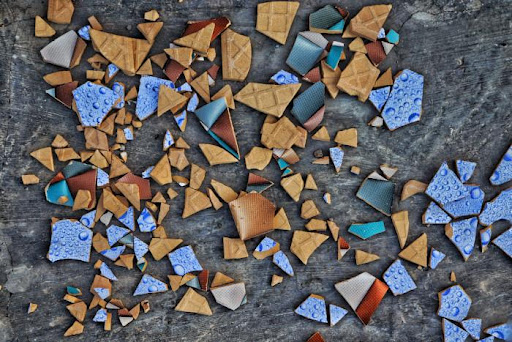Tile is a popular flooring option for kitchens and bathrooms because it’s durable and easy to clean. However, even the most durable materials can break over time. Let’s look at three common reasons why tiles break.

Concrete substrate has cracked
It is not unusual for concrete basement floors, driveways, or patios to have a long crack or two running through them, especially if the concrete is several years old.
Even though concrete seems like the perfect substrate for tile, it carries its own, unique set of problems. When the concrete substrate cracks, this movement is transmitted to the tile above in the form of a reflective crack. If the tile cracks are long, continuous, and extending across multiple tiles, the concrete below has likely cracked.
The only wholesale cure is to strip the tile and then install a crack isolation membrane before installing tile again. These membranes are designed to uncouple the tile from the concrete substrate, allowing the tile to move separately from the concrete. Source: TheSpruce
Inadequate mortar
Ceramic floor tiles, especially larger tiles, need an even distribution of mortar underneath them. Voids in the mortar under the tile allow the tile to flex and crack. As a general rule, tiles larger than 12×12 inches should have mortar applied to the back of the tile as well as the floor to help ensure adequate coverage. Source: HomeSteady
Concrete didn’t cure long enough
When you lay concrete, it’s a good idea to leave it for a good while and let it cure, or harden. And when we say a good while, we mean a month or so. Otherwise, the water in the concrete will evaporate, causing the concrete to shrink. If the tile has been laid on top of concrete that’s shrinking, you’ll start seeing a lot of cracks as they try to keep up. Source: HomeDecorBliss
Are there any broken tiles in your home? No problem! Give us a call to get them fixed in no time.


